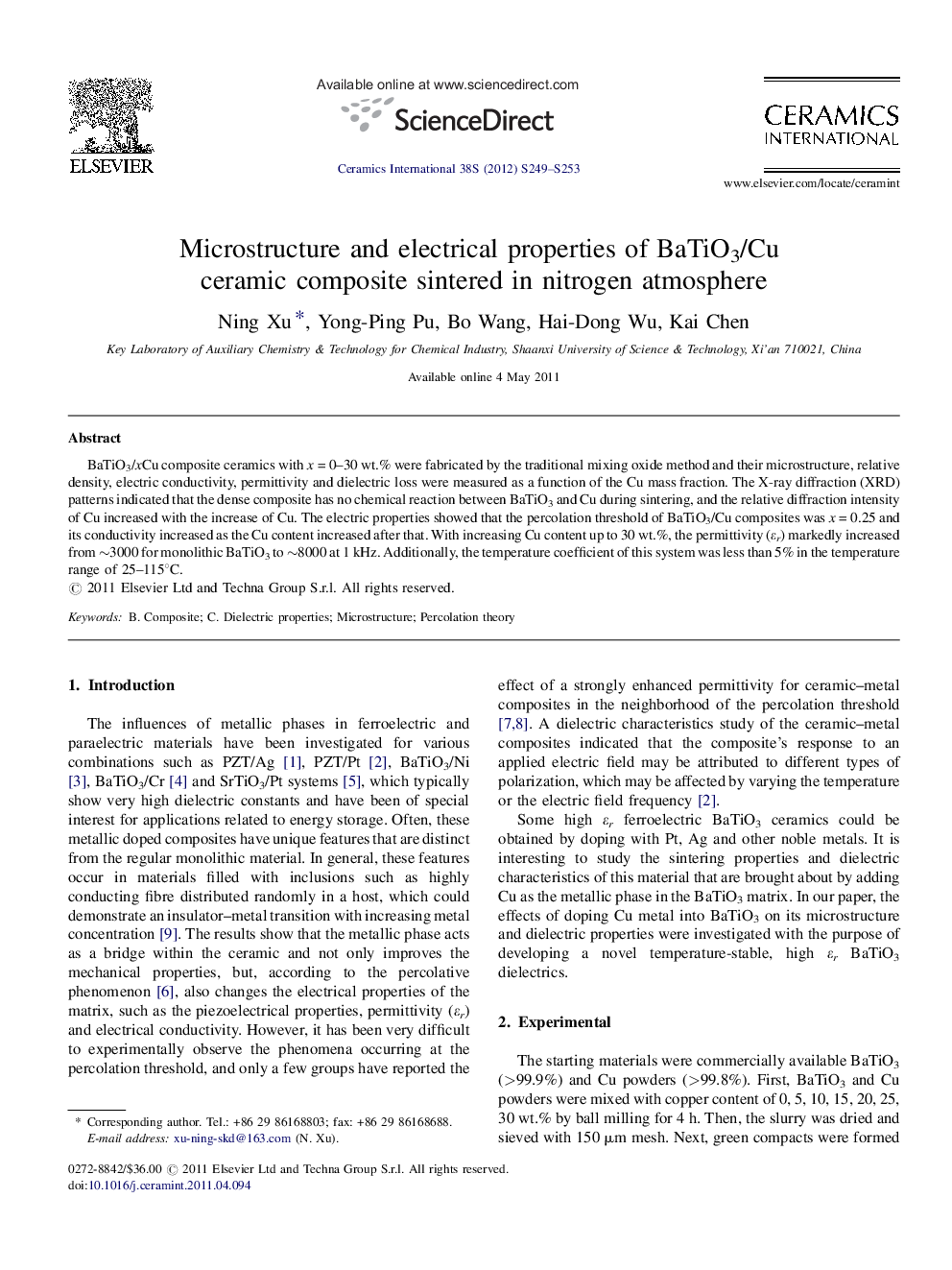| Article ID | Journal | Published Year | Pages | File Type |
|---|---|---|---|---|
| 1462073 | Ceramics International | 2012 | 5 Pages |
BaTiO3/xCu composite ceramics with x = 0–30 wt.% were fabricated by the traditional mixing oxide method and their microstructure, relative density, electric conductivity, permittivity and dielectric loss were measured as a function of the Cu mass fraction. The X-ray diffraction (XRD) patterns indicated that the dense composite has no chemical reaction between BaTiO3 and Cu during sintering, and the relative diffraction intensity of Cu increased with the increase of Cu. The electric properties showed that the percolation threshold of BaTiO3/Cu composites was x = 0.25 and its conductivity increased as the Cu content increased after that. With increasing Cu content up to 30 wt.%, the permittivity (ɛr) markedly increased from ∼3000 for monolithic BaTiO3 to ∼8000 at 1 kHz. Additionally, the temperature coefficient of this system was less than 5% in the temperature range of 25–115°C.
